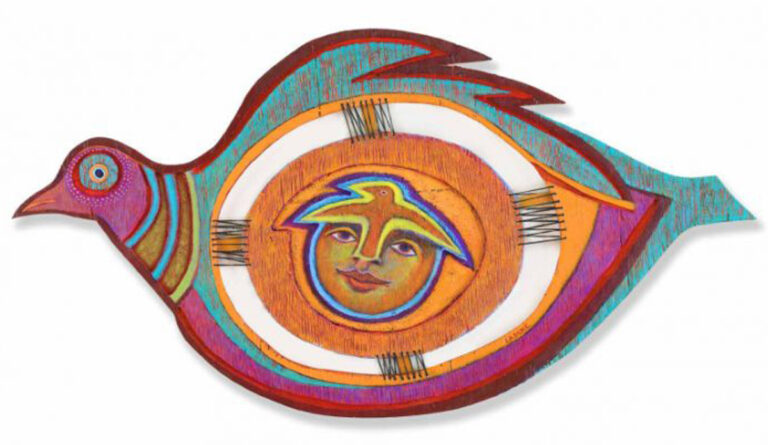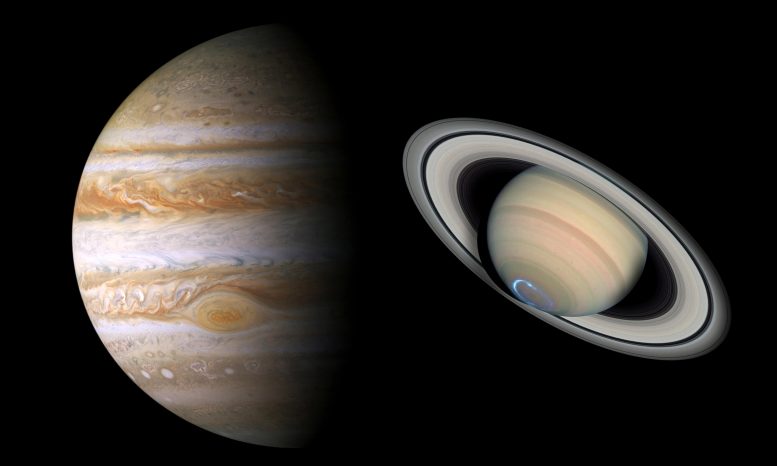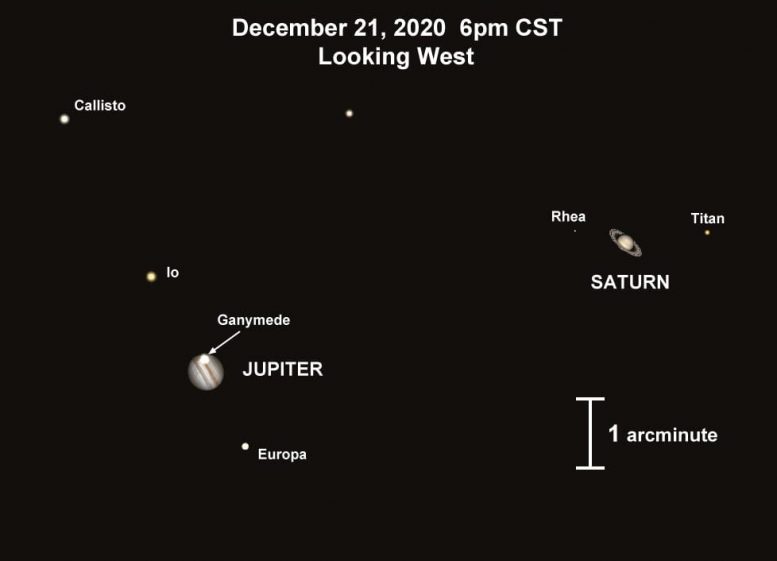Article
By JADE BOYD, RICE UNIVERSITY NOVEMBER 22, 2020
Just after sunset on the evening of December 21, 2020, Jupiter and Saturn will appear closer together in Earth’s night sky than they have been since the Middle Ages, offering people the world over a celestial treat to ring in the winter solstice.
“Alignments between these two planets are rather rare, occurring once every 20 years or so, but this conjunction is exceptionally rare because of how close the planets will appear to one another,” said Rice University astronomer Patrick Hartigan. “You’d have to go all the way back to just before dawn on March 4, 1226, to see a closer alignment between these objects visible in the night sky.”
Jupiter and Saturn have been approaching one another in Earth’s sky since the summer. From December 16-25, the two will be separated by less than the diameter of a full moon.
A view showing how the Jupiter-Saturn conjunction will appear in a telescope pointed toward the western horizon at 6 p.m. CST, December 21, 2020. The image is adapted from graphics by open-source planetarium software Stellarium. Credit: This work, “jupsat1,” is adapted from Stellarium by Patrick Hartigan, used under GPL-2.0, and provided under CC BY 4.0 courtesy of Patrick Hartigan
“On the evening of closest approach on December 21 they will look like a double planet, separated by only 1/5th the diameter of the full moon,” said Hartigan, a professor of physics and astronomy. “For most telescope viewers, each planet and several of their largest moons will be visible in the same field of view that evening.”
Though the best viewing conditions will be near the equator, the event will be observable anywhere on Earth, weather-permitting. Hartigan said the planetary duo will appear low in the western sky for about an hour after sunset each evening.
“The further north a viewer is, the less time they’ll have to catch a glimpse of the conjunction before the planets sink below the horizon,” he said. Fortunately, the planets will be bright enough to be viewed in twilight, which may be the best time for many U.S. viewers to observe the conjunction.
“By the time skies are fully dark in Houston, for example, the conjunction will be just 9 degrees above the horizon,” Hartigan said. “Viewing that would be manageable if the weather cooperates and you have an unobstructed view to the southwest.”
But an hour after sunset, people looking skyward in New York or London will find the planets even closer to the horizon, about 7.5 degrees and 5.3 degrees respectively. Viewers there, and in similar latitudes, would do well to catch a glimpse of the rare astronomical sight as soon after sunset as possible, he said.
Those who prefer to wait and see Jupiter and Saturn this close together and higher in the night sky will need to stick around until March 15, 2080, Hartigan said. After that, the pair won’t make such an appearance until sometime after the year 2400.




